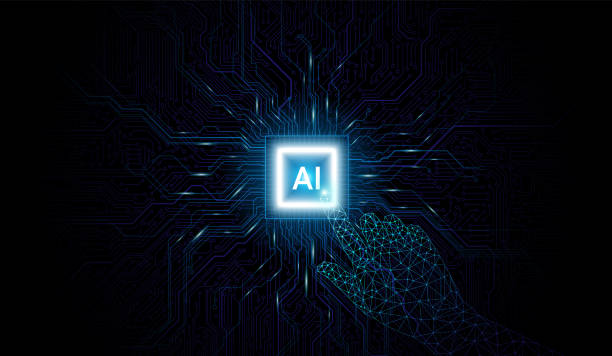What is an Artificial Intelligence Robot and What Are Its Applications?
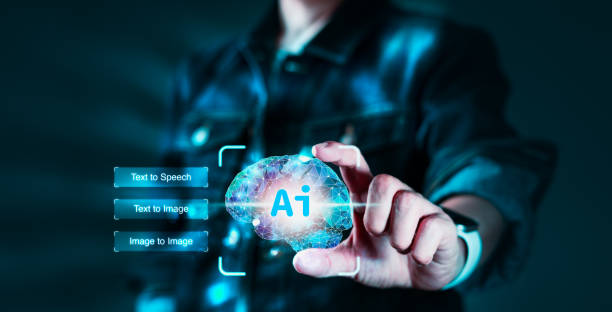
#Artificial Intelligence Robot (AI Robot) is a combination of robotics and artificial intelligence.
In simple terms, an AI robot is a physical machine that, using artificial intelligence algorithms, can perform tasks that usually require human intelligence.
These tasks include learning, reasoning, problem-solving, natural language understanding, and computer vision.
AI robots can be used in various environments and for different purposes, including industry, medicine, education, and customer service.
The applications of AI robots are vast and diverse.
In industry, AI robots can be used for repetitive and dangerous tasks such as welding, painting, and packaging.
In medicine, AI robots can assist surgeons in performing complex operations or be used to diagnose diseases and provide personalized treatments.
In education, AI robots can act as a private tutor and help students learn course material.
And finally, in customer service, AI robots can answer customer questions and solve their problems.
Artificial intelligence allows robots to interact with their environment and make intelligent decisions.
In short, an AI robot is a powerful tool that can help improve efficiency, reduce costs, and increase the quality of life in many areas.
Are you losing potential customers due to an unprofessional website? Rasaweb is your answer! With our specialized corporate website design services:
✅ Enhance the credibility and status of your business
✅ Experience attracting more targeted customers
⚡ Act now to receive a free consultation!
Main Components of an AI Robot

An AI robot consists of several main components that work together to enable the performance of various tasks.
These components include:
- Sensors: Sensors collect information about the surrounding environment.
This information can include images, sounds, temperature, pressure, and other sensory data.
There are different types of sensors, each designed to collect a specific type of information. - Processor: The processor is the brain of the robot and is responsible for processing information collected by sensors, executing AI algorithms, and making decisions.
The processor is usually a computer or microcontroller programmed with specific software. - Actuators: Actuators are mechanical parts that allow the robot to move and interact with the environment.
Actuators can include motors, gearboxes, cylinders, and other mechanical parts. - Software: Software includes AI algorithms, control programs, and other programs that allow the robot to perform its tasks.
AI robot software is usually written using programming languages such as Python, C++, and Java.
Robotics is a broad science that includes the design, construction, operation, and application of robots. - Power Source: The robot needs a power source to function, which is usually a battery or an external power supply.
These components working together enable an #AI robot to understand its surrounding environment, make decisions, and take appropriate action.
AI robots are increasingly used in various industries.
Types of AI Robots Based on Application
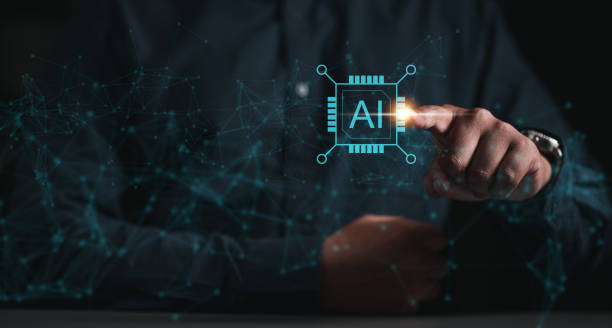
AI robots can be divided into different categories based on their applications.
Some of the most important of these categories include:
- Industrial Robots: These robots are used in factories and production lines to perform repetitive, heavy, and dangerous tasks.
Industrial robots usually have robotic arms that can move and assemble parts with high accuracy and speed. - Medical Robots: These robots are used in hospitals and treatment centers to assist surgeons in performing complex operations, delivering medication, and caring for patients.
Medical robots can increase surgical precision and reduce the risk of side effects. - Service Robots: These robots are used in public places such as hotels, restaurants, and shops to provide services to customers.
Service robots can take orders, serve food, provide information, and answer customer questions. - Educational Robots: These robots are used in schools and universities to help students learn course material.
Educational robots can act as a private tutor and help students learn the material interactively. - Military Robots: These robots are used in armies and armed forces to perform dangerous and difficult tasks such as reconnaissance, bomb disposal, and equipment transport.
These are just a few examples of the types of AI robots.
As technology advances, new applications for AI robots will emerge.
AI robots are revolutionizing various industries.
| Robot Type | Application | Example |
|---|---|---|
| Industrial | Performing repetitive and dangerous tasks | Robotic arm on a car production line |
| Medical | Assisting surgeons and caring for patients | Da Vinci surgical robot |
| Service | Providing services to customers | Waiter robot in a restaurant |
| Educational | Helping students learn | Private tutor robot |
Advantages of Using AI Robots

Using AI robots has many advantages, including:
- Increased Efficiency: Robots can work continuously and without fatigue, leading to increased efficiency and production.
- Reduced Costs: Robots can reduce labor costs and also reduce costs associated with accidents and occupational injuries.
- Improved Quality: Robots can perform tasks with greater accuracy and consistency than humans, leading to improved quality of products and services.
- Increased Safety: Robots can perform dangerous tasks, leading to increased worker safety.
- Performing Tasks Impossible for Humans: Robots can perform tasks that are impossible for humans, such as working in hazardous environments or performing complex surgeries.
These advantages have led to AI robots being increasingly used in various industries.
AI robots can significantly increase productivity.
Does your current website display your brand’s credibility as it should? Or does it drive away potential customers?
Rasaweb, with years of experience in professional corporate website design, is your comprehensive solution.
✅ A modern, beautiful website tailored to your brand identity
✅ A significant increase in lead generation and new customers
⚡ Contact Rasaweb now for a free corporate website design consultation!
Challenges Facing the Development of AI Robots
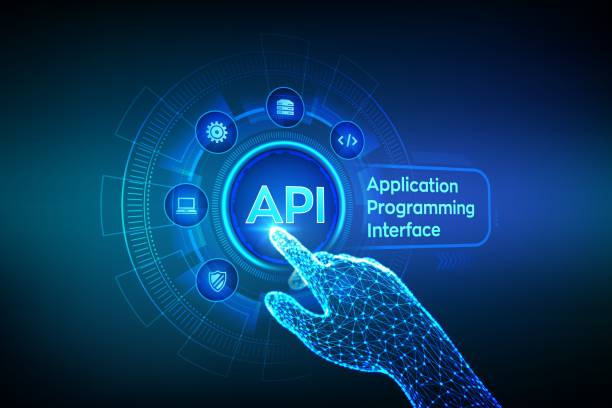
The development of AI robots faces several challenges, including:
- High Cost: The development and construction of AI robots are very expensive.
- Technical Complexity: Designing and building AI robots requires a high level of expertise and technical knowledge.
- Technological Limitations: Artificial intelligence technology is still in its early stages of development and has many limitations.
- Ethical Issues: The use of AI robots raises several ethical issues, such as replacing humans with robots and privacy concerns.
- Need for Skilled Professionals: Designing, developing, and maintaining AI robots requires skilled professionals in various fields such as robotics, artificial intelligence, and software engineering.
Despite these challenges, the development of AI robots continues rapidly, and significant progress is expected in this field in the near future.
AI robots have a great potential to change the world.
The Future of AI Robots and Their Impact on Our Lives
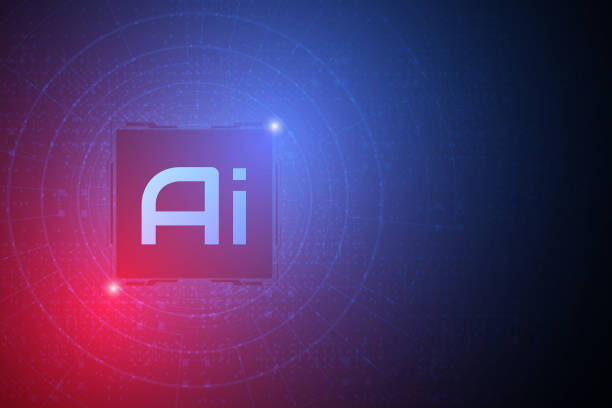
The future of AI robots looks very bright and exciting.
With the advancement of technology, robots will become smarter, more capable, and more affordable, and as a result, their applications in our lives will expand.
It is expected that in the near future we will see robots that can perform more complex tasks, interact with humans more naturally, and assist us in decision-making.
AI robots are increasingly integrated into our daily lives.
The impact of AI robots on our lives will be very broad.
Robots can help us with daily tasks, such as cleaning the house, shopping, and caring for the elderly.
They can also transform various fields such as education, medicine, transportation, and manufacturing.
For example, educational robots can help students learn course material in a personalized way, medical robots can assist surgeons in performing complex operations, self-driving robots can reduce traffic and increase road safety, and industrial robots can improve efficiency and production quality.
AI robots can make our lives easier and more efficient.
However, the expanded use of AI robots will also bring challenges.
One of the most important of these challenges is the issue of replacing humans with robots.
With the advancement of technology, robots will be able to perform many of the tasks that are currently performed by humans, which could lead to unemployment and social inequality.
To address this challenge, appropriate policies and programs need to be developed to educate and empower the workforce so that humans can acquire the skills needed to work in the future world. AI robots require proper management and policymaking.
Difference Between an AI Robot and a Regular Robot
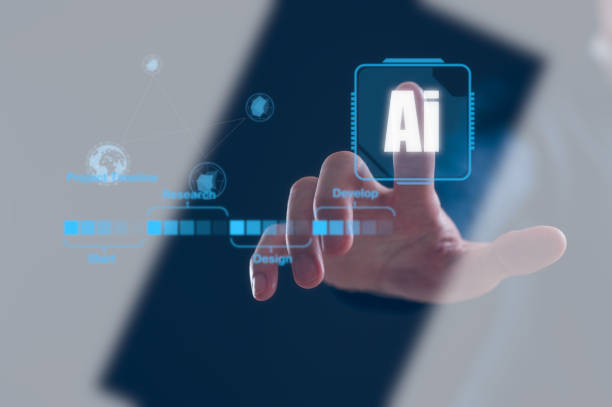
The main difference between an AI robot and a regular robot is in their level of intelligence and learning ability.
Regular robots are typically programmed to perform specific and repetitive tasks and cannot automatically adapt to changes in the environment.
In contrast, AI robots, using artificial intelligence algorithms, can learn, reason, and make decisions.
These capabilities allow AI robots to operate more effectively in complex and dynamic environments.
AI robots have the ability to adapt to different situations.
In other words, regular robots are more like automatic machines that operate according to a specific program, while AI robots are like humans who can learn, think, and decide.
This difference in capabilities allows AI robots to be used in much more diverse areas than regular robots.
AI robots are changing the definition of a robot.
How is an AI Robot Built?

Building an AI robot is a complex and multi-stage process that requires expertise in various fields such as robotics, artificial intelligence, software engineering, and electronics.
In general, this process includes the following steps:
- Design: In this step, the physical and software design of the robot is carried out.
This includes selecting suitable components, designing the mechanical structure of the robot, and writing control programs and AI algorithms. - Construction: In this step, the robot’s components are built and assembled.
This includes building the robot’s body, installing sensors and actuators, and wiring. - Programming: In this step, control programs and AI algorithms are written for the robot.
This includes writing code to process information collected by sensors, making decisions, and controlling actuators. - Testing and Evaluation: In this step, the robot is tested in various environments to evaluate its performance.
This includes checking the accuracy of sensors, the speed and accuracy of actuators, and the efficiency of AI algorithms. - Optimization: In this step, the robot’s performance is improved using data collected during the testing and evaluation phase.
This includes adjusting control parameters, modifying AI algorithms, and improving the mechanical structure of the robot.
Building an AI robot requires a specialized team and a precise and organized process.
AI robots are the result of collaboration between different expertise.
Does your current corporate website not reflect your brand’s credibility and strength as it should? Rasaweb solves this challenge for you with professional corporate website design.
✅ Increased credibility and trust from visitors
✅ Targeted attraction of more customers
⚡ Click to get a free consultation!
AI Robot Security: Threats and Solutions

AI robot security is a very important issue that needs to be given special attention.
AI robots can be targeted by cyberattacks and, if hacked, can be used for malicious purposes.
For example, an industrial AI robot can be used to sabotage a production line, or a military AI robot can be used to attack the enemy.
AI robots can be vulnerable.
AI robot security threats include:
- Cyberattacks: Hackers can exploit software and hardware vulnerabilities to infiltrate AI robots and take control of them.
- Data Manipulation: Hackers can manipulate the data used by AI robots, which can lead to incorrect decisions and poor robot performance.
- Physical Attacks: AI robots can be targeted by physical attacks, such as destroying hardware components or stealing information.
To counter these threats, appropriate security measures must be taken, including:
- Using Security Software: Using security software such as antivirus and firewalls can help protect AI robots from cyberattacks.
- Software Updates: Regularly updating AI robot software can fix security vulnerabilities.
- Physical Protection: Physically protecting AI robots can prevent theft and destruction.
- User Training: Training users about security threats and how to deal with them can help reduce the risk of successful attacks.
AI robot security is a shared responsibility that requires cooperation between manufacturers, users, and security professionals.
AI robots need strong cybersecurity.
| Threat | Description | Solution |
|---|---|---|
| Cyberattacks | Infiltrating the system and controlling the robot | Installing security software and firewalls |
| Data Manipulation | Changing the robot’s input information | Data validation and encryption |
| Physical Attacks | Destruction or theft of the robot | Physical protection and surveillance |
AI Robots in Iran: Opportunities and Challenges

Developing AI robots in Iran can bring many opportunities for the country.
Robots can help improve efficiency and productivity in various industries, reduce costs, and increase the quality of products and services.
Also, the development of AI robots can help create jobs and develop advanced technologies in the country.
AI robots can help Iran’s economic development.
However, developing AI robots in Iran also brings challenges.
One of the most important of these challenges is the shortage of skilled professionals in the fields of robotics, artificial intelligence, and software engineering.
To address this challenge, more investment needs to be made in educating and training specialized human resources.
Another challenge is the lack of financial resources and infrastructure needed to develop AI robots.
To address this challenge, the government and the private sector need to work together to make the necessary investments.
AI robots require investment.
Despite these challenges, Iran has a high potential for developing AI robots.
The existence of reputable universities, a young and talented workforce, and the government’s interest in developing advanced technologies are among the factors that can help Iran succeed in this field.
AI robots are building Iran’s future.
Frequently Asked Questions
| Row | Question | Answer |
|---|---|---|
| 1 | What is an artificial intelligence robot? | An artificial intelligence robot is a machine capable of understanding, reasoning, learning, and problem-solving, and can perform complex tasks with relative autonomy. |
| 2 | What are the most important applications of artificial intelligence robots? | Main applications include industrial production, customer service (chatbots), medicine and surgery, autonomous transportation, space exploration, and military affairs. |
| 3 | What is the main difference between an artificial intelligence robot and a regular robot? | A regular robot only follows programmed instructions, while an artificial intelligence robot can learn from data, make decisions, and adapt to new environments. |
| 4 | How do artificial intelligence robots learn? | They identify patterns and improve their performance through machine learning algorithms (such as deep learning, reinforcement learning) and processing vast amounts of data. |
| 5 | Can artificial intelligence robots have emotions? | Currently, artificial intelligence robots do not have real emotions in the human sense. They can mimic or recognize emotions, but do not understand and experience them. |
| 6 | What are the current limitations of artificial intelligence robots? | Limitations include the need for a lot of data, the inability to understand abstract concepts, lack of real creativity, ethical issues, and the challenges of generalizability in new environments. |
| 7 | What is the role of artificial intelligence in the development of humanoid robots? | Artificial intelligence helps humanoid robots walk, maintain balance, understand their surroundings, interact with humans, and perform complex tasks. |
| 8 | How is the future of artificial intelligence robots predicted? | Artificial intelligence robots are predicted to become smarter, more autonomous, and able to perform more complex tasks in everyday life and industry, and their interaction with humans will increase. |
| 9 | Can artificial intelligence robots replace all human jobs? | It is unlikely that all human jobs will be replaced. Robots take over many repetitive and dangerous tasks, but jobs that require creativity, empathy, and ethical judgment will remain. |
| 10 | What ethical and social challenges are raised with the expansion of artificial intelligence robots? | Challenges include issues related to privacy, data security, ethical decision-making by robots, impact on employment, and accountability in case of errors. |
And other services of Rasa Web Advertising Agency in the field of advertising
Smart Google Ads: A combination of creativity and technology to increase sales through custom programming.
Smart Sales Automation: An effective tool for online growth by customizing the user experience.
Smart Marketing Automation: Professional optimization to increase sales using custom programming.
Smart Google Ads: A professional solution to improve SEO ranking by focusing on optimizing key pages.
Smart Social Media: Transform campaign management with the help of optimizing key pages.
And over a hundred other services in the field of internet advertising, advertising consulting and organizational solutions
Internet Advertising | Advertising Strategy | Reportage Advertising
Resources
What is a smart robot and how does it work?
,What is an artificial intelligence robot?
,Types of smart robots and their applications
,Artificial intelligence robot construction tutorial
?With Rasaweb Afrin, your business shines at its peak! With our expertise in personal website design and a wide range of digital marketing services, we create a powerful and impactful presence in the online world for you.
📍 Tehran, Mirdamad Street, next to the Central Bank, Kazerun Jonoubi Alley, Ramin Alley No. 6

